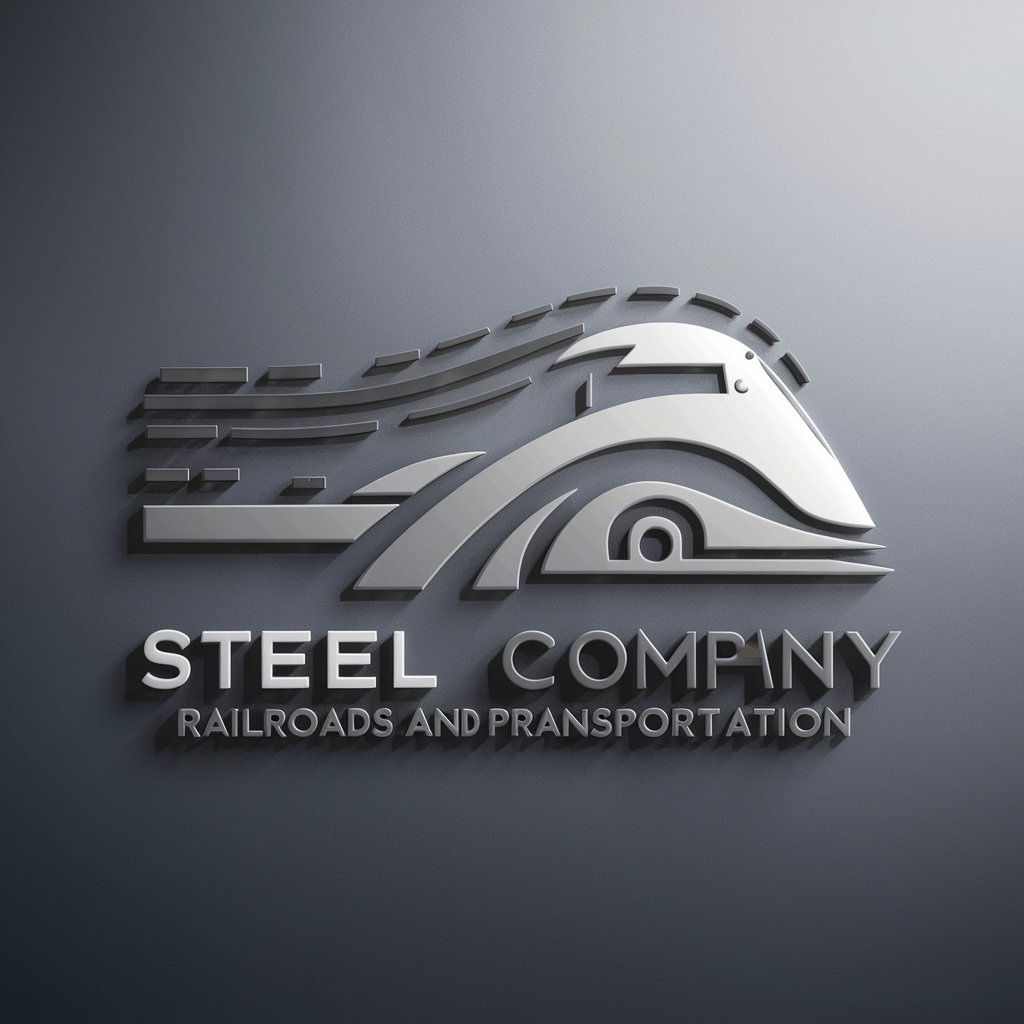Railroads - In-depth Railroad Exploration

Hello! Let's explore the fascinating world of railroads and rail transportation.
Unveiling the Future of Rail Transport with AI
Describe the key advancements in modern rail signaling systems.
Explain the engineering principles behind high-speed rail track design.
Discuss the historical development of railroads in the 19th century.
How do modern freight trains contribute to supply chain efficiency?
Get Embed Code
Introduction to Railroads
Railroads, comprising networks of tracks, trains, and stations, serve as a fundamental infrastructure for land-based transportation of passengers and goods. They are designed to offer efficient, reliable, and cost-effective transport over medium to long distances. Railroads are engineered with various components including tracks, which provide a stable path for trains; trains themselves, consisting of locomotives that power the movement and railcars for carrying freight or passengers; and signal systems, ensuring safe and coordinated operations across the network. Railroads are utilized in diverse scenarios, from hauling bulk commodities like coal and iron ore in industrial contexts, to facilitating commuter travel in metropolitan areas, and offering long-distance travel options across countries. For example, freight railroads play a crucial role in the supply chain, moving goods from ports to inland distribution centers, while passenger railroads offer daily commuting options for workers as well as intercity travel services. Powered by ChatGPT-4o。

Main Functions of Railroads
Freight Transportation
Example
Transporting coal from mines to power plants.
Scenario
In this use case, railroads are leveraged for their capacity to move large volumes of heavy materials over long distances efficiently, benefiting industries reliant on steady supplies of raw materials.
Passenger Transportation
Example
Commuter rail services in metropolitan areas.
Scenario
Railroads offer a sustainable alternative to road traffic, easing congestion and reducing carbon emissions by transporting large numbers of passengers with regular, reliable services.
Intermodal Transportation
Example
Shipping containers transferred from ships to trains.
Scenario
This function highlights railroads' role in the global supply chain, facilitating the seamless movement of goods from international to domestic destinations by connecting different modes of transportation.
Tourism and Leisure Travel
Example
Scenic train routes like the Trans-Siberian Railway.
Scenario
Railroads also cater to the tourism sector, offering unique travel experiences over routes that showcase natural landscapes and cultural landmarks inaccessible by other means of transport.
Ideal Users of Railroads Services
Logistics and Freight Companies
These entities rely on railroads for the bulk movement of goods, benefiting from the efficiency and cost-effectiveness of rail transport for long-haul deliveries.
Daily Commuters
Individuals living in urban or suburban areas who commute to work or school. Railroads offer them a reliable, timely, and less stressful alternative to driving.
Tourists and Leisure Travelers
People seeking unique travel experiences or exploring destinations across or between countries. Railroads provide them with comfortable, scenic, and often historic travel routes.
Environmental Advocates
Those committed to reducing carbon footprints and promoting sustainable transportation modes. Railroads, being more energy-efficient and less polluting than road or air transport, align with their values.

Using Railroads: A Step-by-Step Guide
Step 1
Begin by accessing a platform for an in-depth exploration of rail transportation, similar to initiating a trial on a comprehensive AI service without the need for registration.
Step 2
Identify your specific interest or need related to railroads, such as learning about train operations, history, infrastructure, or technological advancements.
Step 3
Utilize search functionalities or direct queries to navigate through the wealth of information available, focusing on your areas of interest.
Step 4
Engage with interactive features or tools that allow for deeper analysis, simulation, or visualization of railroad systems and their components.
Step 5
Apply the insights gained to your academic, professional, or personal projects, leveraging the detailed information to enhance your understanding or outcomes.
Try other advanced and practical GPTs
Sarcasm Supreme
Where AI meets wit and irony.

" डॉक्टर पोषण "
Tailored nutrition at your fingertips

Find My Danish Ancestors
Uncover Your Danish Roots with AI

Prospect Analyst
Elevate Your Sales with AI-Powered Insights

"Obiteljski doctor"
Your Personalized Health Assistant, Powered by AI

Baby Boomers
Unlocking Baby Boomer Insights with AI

Retro Image 1945
Bringing 1945 to Life with AI

Topical Authority DE
Empower Your SEO with AI-Driven Niche Authority

iCutty
Empowering Your Work and Ventures with AI

The Marketing Ninja Bot
Elevate Your Marketing with AI-Powered Expertise

Patrick
Embrace Baldness, Defy Norms

SEO Master
Empower Your SEO with AI

Frequently Asked Questions about Railroads
What are the key components of a railroad system?
A railroad system comprises tracks, signaling systems, rolling stock (trains), and stations. Tracks provide the pathway for trains, signaling systems ensure safe operation, rolling stock is the vehicles that travel on the tracks, and stations are the points for passenger exchange or freight handling.
How do modern signaling systems enhance railroad safety?
Modern signaling systems use digital communication, sensors, and automated control technologies to monitor train movements, control train speeds, and manage track access. These systems significantly reduce human error, prevent collisions, and enhance overall safety on the rail network.
What role do railroads play in environmental sustainability?
Railroads are among the most energy-efficient modes of transport for both passengers and freight, emitting far less CO2 per ton-mile than road vehicles. They reduce road congestion, lower greenhouse gas emissions, and contribute to a more sustainable transportation network.
How has high-speed rail transformed long-distance travel?
High-speed rail offers rapid, reliable, and comfortable transportation over long distances, significantly reducing travel times compared to conventional rail and, in some cases, air travel. It has revolutionized inter-city travel, especially in densely populated or economically integrated regions.
What advancements are shaping the future of railroads?
The future of railroads is being shaped by advancements in automation, electrification, and digitalization. Autonomous train operation, electric trains, and smart infrastructure are enhancing efficiency, reducing environmental impact, and improving safety and reliability.
